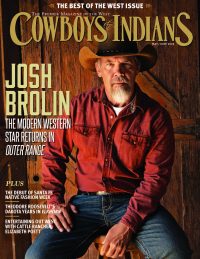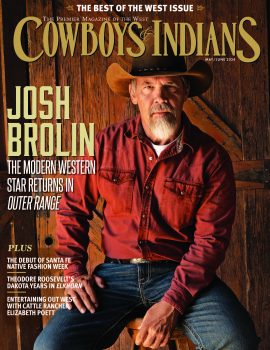The painter's interest in shadows and technique evolved into her 17th-century Spanish bodegón still-life paintings.
For painter Melinda Littlejohn, beauty is found in the shadows. Shadow requires both light and dark, and it’s in that interplay that she thrives. Her most recent work features an earthy chiaroscuro approach to still lifes of Native American pottery. Horses are another of her favorite themes. Pottery and horses, light and shadow — if the subject matter and treatment bring to mind New Mexico, there’s a reason for that.
Raised on quarter horse ranches in New Mexico and northern Oklahoma, the Taos-based artist spent her childhood summers painting and showing five-gaited American Saddlebreds and American Quarter Horses on the Western show circuit. Art came with her heritage as much as horses did: “My Aunt Helen founded the Taos Inn in Taos, New Mexico, and was also an early batik artist, so I was influenced by her earth tones and the textures that she used,” Littlejohn says. “I would spend my summers with her until she died, sketching and painting with the various fine artists that frequented the salon. That culture was all around me, and it really influenced my work.”
Her maternal aunt, Helen Campbell Martin, had married T.P. “Doc” Martin in 1917. Their property — the old Taos adobe that he officed out of for his far-ranging “horse and buggy” medical practice and that Helen would turn into a hotel after Doc’s death — hosted the formative meeting of what would become the Taos Society of Artists. The Martins’ home would become fabled for welcoming the likes of founding society artists Bert Geer Phillips, Eanger Irving Couse, and Joseph Henry Sharp, as well as other celebs such as Greta Garbo, D.H. Lawrence, and Pawnee Bill. That milieu — along with the influence of Littlejohn’s own mother, a respected art collector and patron of the five historical Taos museums — set the young artist on a creative course to become a painter and sculptor.
After studying at Interlochen Arts Academy outside Traverse City, Michigan, Littlejohn moved to Paris to study sculpture. She later developed an interest in animation and film graphics and eventually graduated from the California Institute of the Arts with a degree in film and the fine arts. Moving to Malibu, California, she married into Hollywood royalty (her father-in-law, Bill Littlejohn, was one of the film industry’s top animators), raised a family, and worked in the animation film industry.
She began her fine art career as a minimal abstractionist, but Littlejohn eventually gravitated to the style of 17th-century Spanish bodegón still-life paintings, which featured everyday objects typically arranged on a stone slab. For Littlejohn, the simple style is well-suited to her use of “light and shadow to achieve a certain ambience.”
She found ambience in abundance six years ago when she moved back to Taos and was again inspired by New Mexico’s high-contrast lights and darks. Horses still figure into the mix: In addition to recently working with actress Katharine Ross on a life-size Kiger Mustang sculpture to benefit Return to Freedom American Wild Horse Sanctuary, Littlejohn is creating a series of paintings of Gypsy Vanner horses. But immersing herself in the creative culture that fueled her earliest imagination and making paintings of pottery are how she seems to derive her greatest joy and peace.
Her starkly beautiful and quietly hypnotic still lifes of American Indian pottery convey and even bestow an everyday state of grace. “There is a sense of calmness and the nocturnal in the things that I paint,” Littlejohn says. “I take a visual journey with my pottery paintings, exploring the cracks and subtle shadows to create a mood and life of their own. When it works, the piece takes on its own veneer. Now my work has everything to do with my past life and history, using light and dark and what is around me.”
For more on Melinda Littlejohn, visit her website.
From the November/December 2016 issue.












